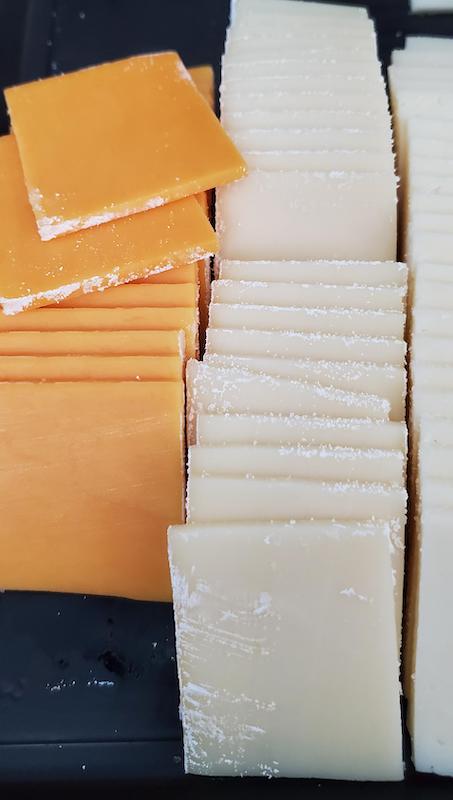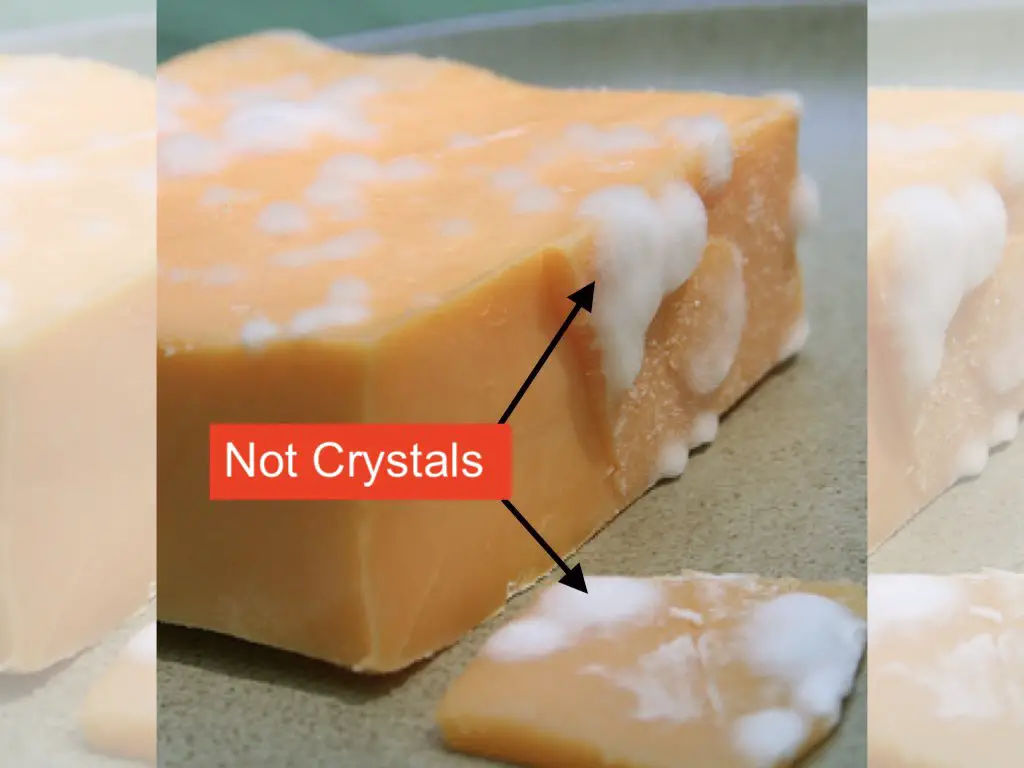Last Updated on December 8, 2022 by Aaron
What are those white stuff on your cheddar cheese? Is it mold or not, and should you throw away the cheese — the answer is — it depends.
White spots can have a variety of causes. It is usually harmless calcium lactate, especially on your aged ‘sharp’ cheddar. This is a good thing. But other times it could also be an indication of spoilage.
In this blog post, we will discuss the different types of white spots on your cheddar cheese, and whether or not it’s safe for you to eat.


What are those things?
If you see white spots or powdery streaks (sometimes smears) on your cheddar cheese, it is usually recognized as the cheese crystals or flavor crystals.
These cheese crystals are the natural occurrence of calcium ions in milk binding with the rising concentration of lactic acid as the cheese ages. Sometimes it will cover the whole surface of the cheddar cheese, and this is considered a common defect in the industry (2). While the cheese is still safe to eat, it may not look appetizing if too much calcium lactates are formed. Moisture can encourage the presence of crystals.
There are other crystals as well, such as amino acid crystals like tyrosine or leucine crystals, but for cheddar, the majority are still calcium lactate crystals. These crystals are formed from calcium ions binding to two lactic acid ions, and they are perfectly safe to eat.
Depending on their production and other factors, certain cheddar types or brands will likely to have more while some others may not have it at all. That includes blocks or pre-shredded cheddar.
Crystals add extra crunchiness when bitten into them, but it does not actually have real flavor by itself. It’s common to taste a little salty or even slightly bitter(1). A well-aged cheddar will often be described to have some crystals with them indicating that the cheese has been aged for a long period of time. The longer the cheese age, the more likely to form these crystals. Similar to the white spots on Parmesan.
But, if it’s too much on your cheddar or doesn’t find them visual appeal for your guest, just use a knife to scrape off some of the surface smears.

How to know if it’s not mold?
Sometimes, it can be quite confusing to distinguish. But if you take a closer inspection, crystals should be sugar-like texture, crunchy, gritty, and granular. While for mold, usually grow on the surface or the cheese exterior only. Therefore if you cut the cheese through, it should not appear on the inside of the cheese.
If you try to touch the white stuff, it should be solid, gritty — just like salt — and is able to scrap off from the cheese. It shouldn’t be soft, fuzzy patches, filament-like, thready, and collapse easily. Mold tends to be more than just white color, the typical molds are black, green, brown, and more.
A variety of cheddar called blue cheddar — similar to blue cheeses — has been added with Penicillium Roquefort mold to have the blue veining.
If you still aren’t too sure about it, read our previous post about mold vs cheese crystals.
If you see mold growing on your cheddar cheese, it is still okay to salvage the rest of the cheese by cutting off at least one inch around the moldy part. Mold on cheddar cheese usually happens when the cheese has not been stored properly, or if it’s past its expiration date.


